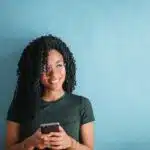When you have a small business, your budget is going to be proportional. But not having a big budget shouldn’t stop you from trying to grow your business as best as you can – you just need to allocate your funds properly. And since moving company marketing will go a long way in helping you reach more clients, it’s something you need to invest in. The only question is how much. When you’re trying to set a marketing budget for a small business, you need to walk a fine line: it needs to be big enough to run a good campaign on but not so big that it cuts into your other important expenses. So how does one draw the line?
Why do you need to set a marketing budget for a small business?

When you’re working with a limited budget, you look for ways to cut costs. So you may be considering slashing your marketing budget to save some money. That would be a mistake because marketing is crucial for growing a small business. It’ll help you raise awareness and attract customers, which will in turn lead to sales.
This is exactly what every small business needs. But good marketing only gets you so far; once you attract customers, you need to convert them and keep them. You can only do that by offering quality services. And maintaining a high quality of service requires money – you need to hire enough employees, train them, and equip them properly. So you can’t spend all your money on marketing. There needs to be a balance. The only way to achieve this without going into debt is by planning your budget in advance.
The best way to set a marketing budget for a small business
Deciding on a marketing budget is not as simple as just writing down your ideal number. You have to be realistic and make informed decisions if you want to get the most out of your investment. So what should you take into consideration when budgeting for marketing?
Step 1: Identify your niche
When you first start your business, you may find it tempting to try to sell your services to absolutely everyone. After all, that’s the best way to reach the most people the fastest, right? Wrong; the shotgun approach only works for the kind of goods that absolutely everyone uses and usually only after there’s some brand recognition. Successful marketing for small businesses is all about selling a specific product or service to a select audience. This allows you to focus your strategy and target the people who are most likely to benefit from what you’re selling in ways they are most likely to respond to. The result is a much higher conversion rate at lower marketing expenditures.

So the first thing you’ll need to do when creating a marketing plan and budget is to identify your target audience. Who is your ideal customer? How old are they, where are they from, what are they looking for in your industry? And perhaps most importantly, what type of marketing do they respond to? You’ll find answers to these questions by doing market research and looking at what your competition is doing.
Step 2: Create a marketing strategy
Once you know who you’re marketing to, it’s time to decide exactly how to market a moving company that’s just starting out. This is where you put all the information you gathered in your previous research to good use. First, you should identify your goals. Ultimately, the goal of everything you do is to increase sales and grow your business. But you need to be more specific than that – set precise and achievable goals like driving traffic to your website or increasing engagement on social media. Then, decide how you want to distribute your message. TV ads or social media marketing? SEO or handing out flyers? This will depend on your target audience. Finally, find a way to measure your success. That’s the only way to know that your strategy is actually paying off.
Step 3: Calculate your expected costs
This might be the toughest yet most important step when planning a marketing budget. You need to figure out how much your ideal plan is going to cost you. Some marketing techniques like email marketing or social media engagement are quite affordable – you just need to account for the expenses of hiring someone for your marketing department if you don’t have one already. But others like TV ads or physical billboards can cost a pretty penny. Consult with a digital marketing agency to get a more accurate estimate of your future marketing expenses. If you want an extensive marketing strategy and don’t have an in-house marketing team, hiring a marketing agency may actually turn out to be your most affordable option.
Step 4: Look at the big picture

Your marketing budget is only one small part of your overall budget. So once you know how much you want to spend, you also need to take into consideration how much you can spend. It’s important to be realistic at this point. The marketing budget for a small business shouldn’t exceed 6-7% of gross revenue.
The rest of your budget will go toward employee salaries, equipment, maintenance, and other operational costs that cannot be neglected. So it’s important to make sure that you have enough money to pay for PPC management for moving companies and other types of marketing campaigns before you embark on one. Otherwise, you won’t be able to back up your good marketing with good services.
Step 5: Re-examine your plans and adjust
Finally, it’s time to make sure that your marketing budget fits reasonably within your overall budget. Although we’d all like to have unlimited funds at our disposal and spend as much as we want on marketing while also having plenty to run the business with, that’s not how it usually goes. So in most cases, this step requires some adjusting. You’ll probably need to find ways to save money on marketing by focusing on low-cost high-return strategies. But once you manage to create a marketing plan that works for your business and fits within your budget, you’re done!
General tips to help you set a marketing budget for a small business
As you’re planning you’re marketing budget, you should keep in mind that even free marketing techniques have a cost – time. You need to keep this in mind when planning because it affects how you allocate your human resources. After all, someone has to send out emails, create content, and post to social media too.
Another thing to keep in mind is that even after you set a marketing budget for a small business, you need to be flexible. A lot of budget planning relies on projection. You calculate based on how much you expect certain strategies to cost and how much revenue you expect to receive. But your calculations could be off, for better or worse. It’s important to be able to adjust to such circumstances, either by increasing your investments or cutting them. So monitor your successes and your costs and adapt plans if necessary!






